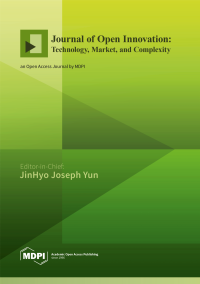Industrial Engineering and Supply Chain Management in Sustainable Economic Growth
A special issue of Journal of Open Innovation: Technology, Market, and Complexity (ISSN 2199-8531).
Deadline for manuscript submissions: closed (31 December 2021) | Viewed by 31990
Special Issue Editor
Interests: operations management; decision-making; management of technology; electronic commerce; systematic innovation
Special Issue Information
Dear Colleagues,
Supply chain management covers all aspects of creating customer value in the global competitive economy. This includes new product design and development, supplier selection, technology and innovation, production planning, distribution, etc. These issues, coupled with the ever changing nature and growth of technologies, are creating new and exciting challenges for modern supply chains when it comes to the integration between physical and cyber systems, as well as resilience to unpredictable events, are becoming decisive to organizations’ operational and long-term success.
The International Conference on Logistics and Industrial Engineering (ICLIE) 2021 (https://iclie-vlu.com/) will be held at Van Lang University, Ho Chi Minh City, Vietnam, 27–28 August 2021.
The ICLIE 2021 event aims to collect high-quality research studies from leading researchers, educators, software developers, and practitioners to discuss current issues, share ideas and experiences on the latest development in the field of technology and innovation, technology management, industrial system engineering, logistics and supply chain management, and management sciences.
This Special Issue is being published in cooperation with ICLIE 2021. The authors of outstanding papers related to industrial engineering/ supply chain management are invited to submit their manuscript to this Special Issue for publication.
Prof. Dr. Chia-Nan Wang
Guest Editor
Manuscript Submission Information
Manuscripts should be submitted online at www.mdpi.com by registering and logging in to this website. Once you are registered, click here to go to the submission form. Manuscripts can be submitted until the deadline. All submissions that pass pre-check are peer-reviewed. Accepted papers will be published continuously in the journal (as soon as accepted) and will be listed together on the special issue website. Research articles, review articles as well as short communications are invited. For planned papers, a title and short abstract (about 100 words) can be sent to the Editorial Office for announcement on this website.
Submitted manuscripts should not have been published previously, nor be under consideration for publication elsewhere (except conference proceedings papers). All manuscripts are thoroughly refereed through a single-blind peer-review process. A guide for authors and other relevant information for submission of manuscripts is available on the Instructions for Authors page. Journal of Open Innovation: Technology, Market, and Complexity is an international peer-reviewed open access quarterly journal published by MDPI.
Please visit the Instructions for Authors page before submitting a manuscript. The Article Processing Charge (APC) for publication in this open access journal is 800 CHF (Swiss Francs). Submitted papers should be well formatted and use good English. Authors may use MDPI's English editing service prior to publication or during author revisions.
Keywords
- Business model developing cases
- Technology and innovation, technology management
- Modeling and engineering of designing and manufacturing
- International commerce
- Logistics and green mobility
- Open innovation dynamics
- Business model
- Open innovation engineering
- Sustainability in logistics and supply chains
- Intelligent transportation and distribution systems: theory and application models
- Optimization of logistics and supply chain systems
- Decision support systems for logistics and supply chain management
- Operation research/optimization
- Scheduling in manufacturing and service systems
- And other related topics in the field of business and commerce, industrial engineering, management science, logistics, and supply chain management




